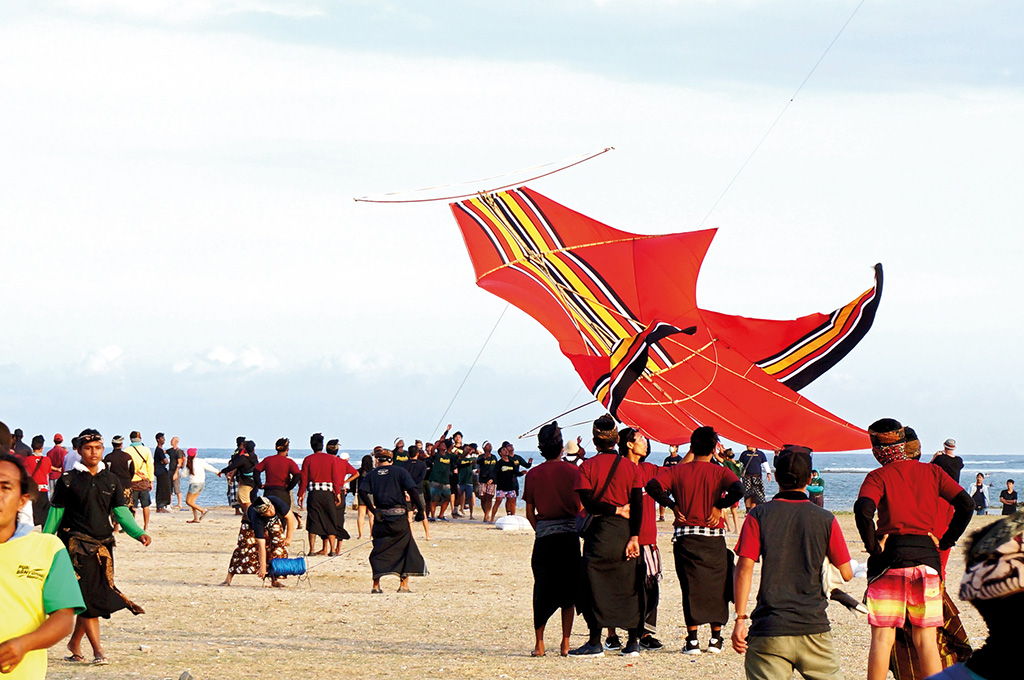
From June to September, cool winds from the Australian winter blow across the island’s south coast, and the combination of warm sunshine and beach breeze make for a most delightful climate. Whilst visitors relish in the perfect sunbathing weather, the Balinese capitalise on this auspicious meteorology to engage in the island-favourite pastime: flying kites!
• Cultural Significance
• Types of Kites
• Bali Kite Festival
Cultural Significance of Kites in Bali
An excerpt by Jean Couteau
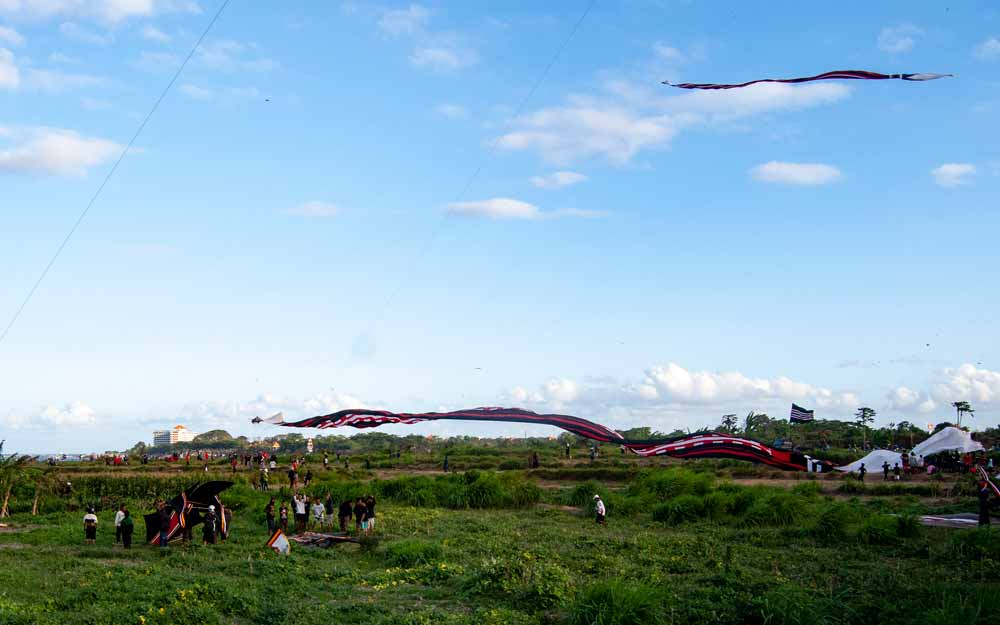
Kite flying is more than just a game: it is a serious and sacred matter, especially for the larger kites. Whilst kite flying may just seem like a local hobby, its history is rooted in two of Bali’s important pillars: religion and agriculture.
In Bali’s own pantheon of deities one finds Sang Hyang Rare Angon, a ‘shepherd boy’, but also a manifestation of Shiva. This shepherd boy would call the wind forth using his magical flute and the kites could take flight. Kites were considered useful for farmers, who believed that their presence would repel any pests during times of harvest. Rare Angon is also worshipped to during the holy day for animals, known as Tumpek Kandang. Kite flying can therefore be construed as the opening of a mediating channel between the world of humans and the upper world of the gods.
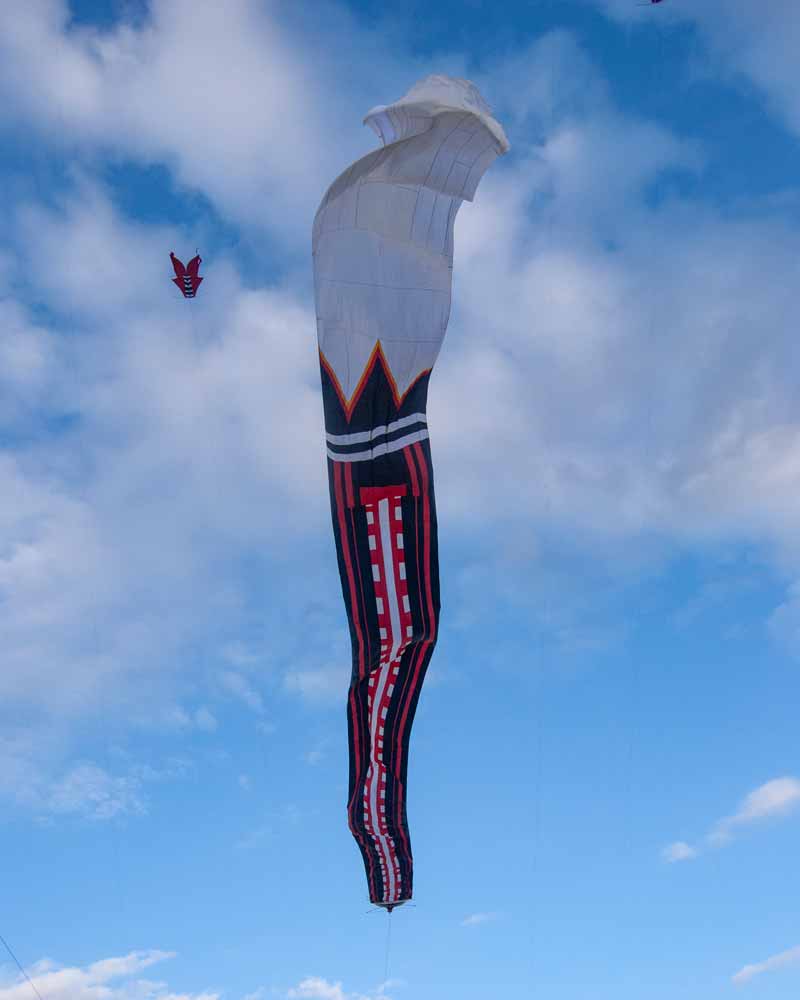
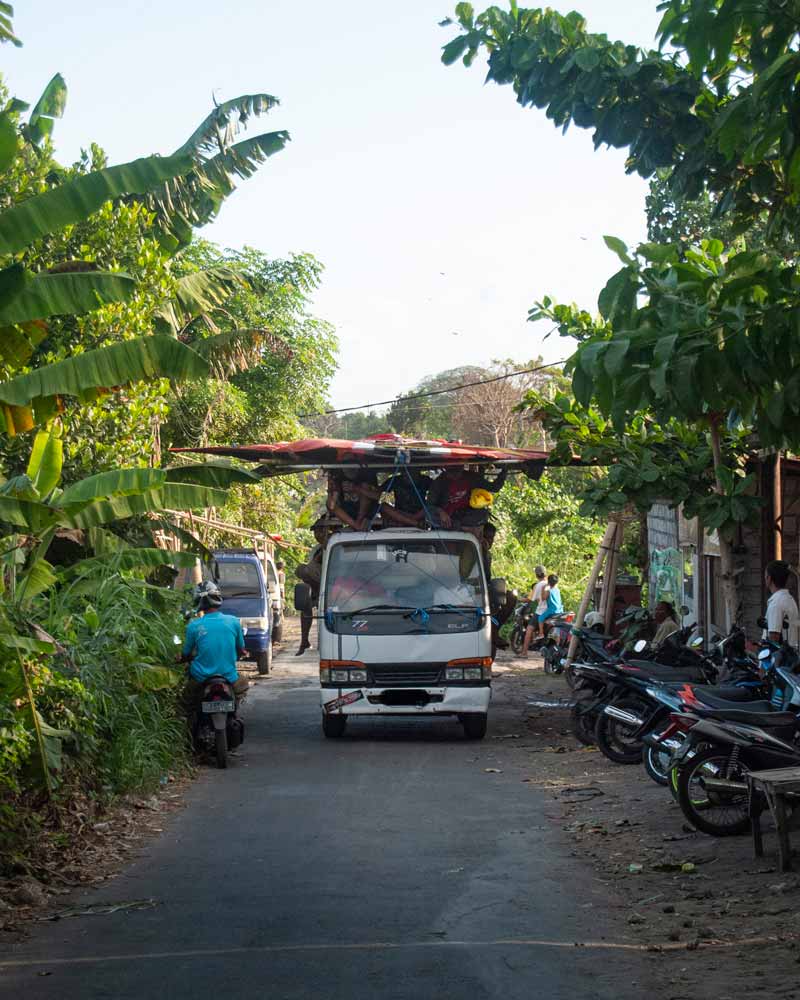
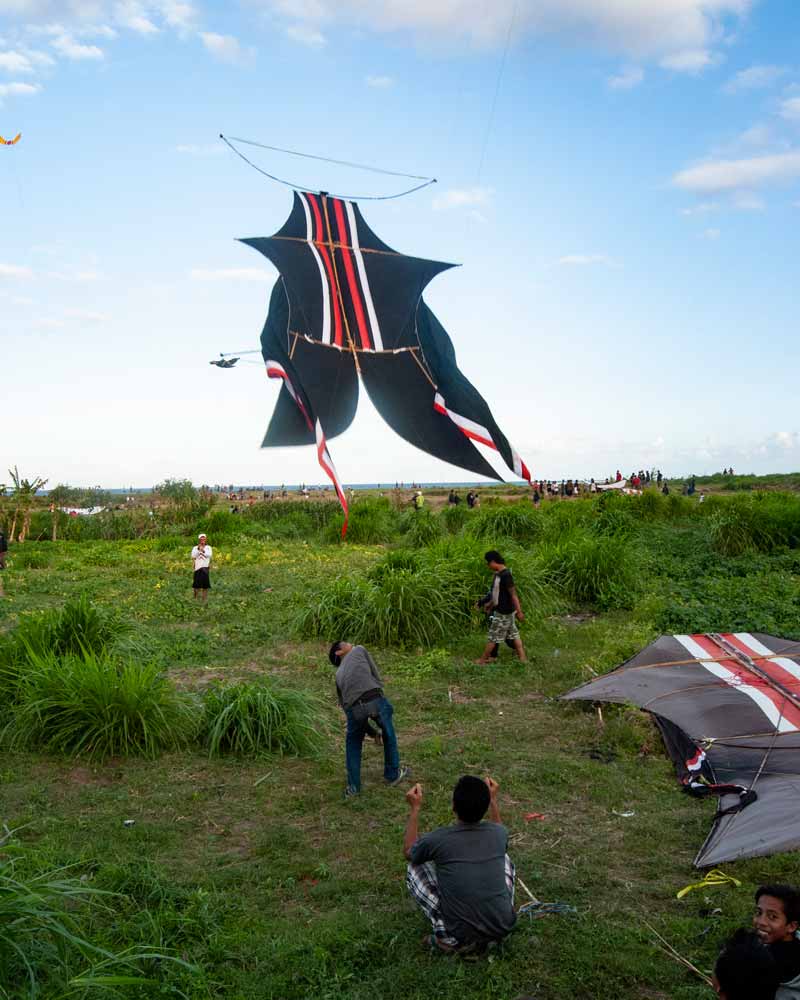
The construction and flying of the larger kites, which can reach up to 7-8 meters long, is a grown-ups’ affair and may require the assistance of dozens of people. Kite fans may set up special associations (seka layang-layang) for the making and running of a single kite. Sometimes whole banjar (neighborhood associations) get involved. Every family is then required to pay a due for the sake of having the biggest and most beautiful kite around. It then becomes the banner of their community in inter-village contests, formal and informal. Such large kites cost hundreds of thousands of rupiahs. They are made with the assistance of elders, who know better not only which bamboo to choose, but also which date is the most propitious (dewasa ayu) for its launching. Just before that event, a small pemelaspas ceremony, complete with the sprinkling of holy water, is held to “bring the kite to life”. Then it is taken to the launching ground on the shoulders of its supporters, sometimes accompanied by a beleganjur gamelan orchestra.
No little skill –and wind– is required for the take off of such large structures and the first go is seldom the good one. Once in the air, the trick is to keep the thread constantly taut, lest it falls. To make the grasp surer the thread is previously soaked in a sticky mixture of glass powder and wood paste. Then it is a matter of luck and skill. Only the very best kite flyers can control the sky for long a period of time. Kites may stay days in the air before being pulled down. It is not rare that members of the seka layang-layang put aside all other obligations for the sake of flying their kite. And they do it everyday.
Types of Balinese Kites
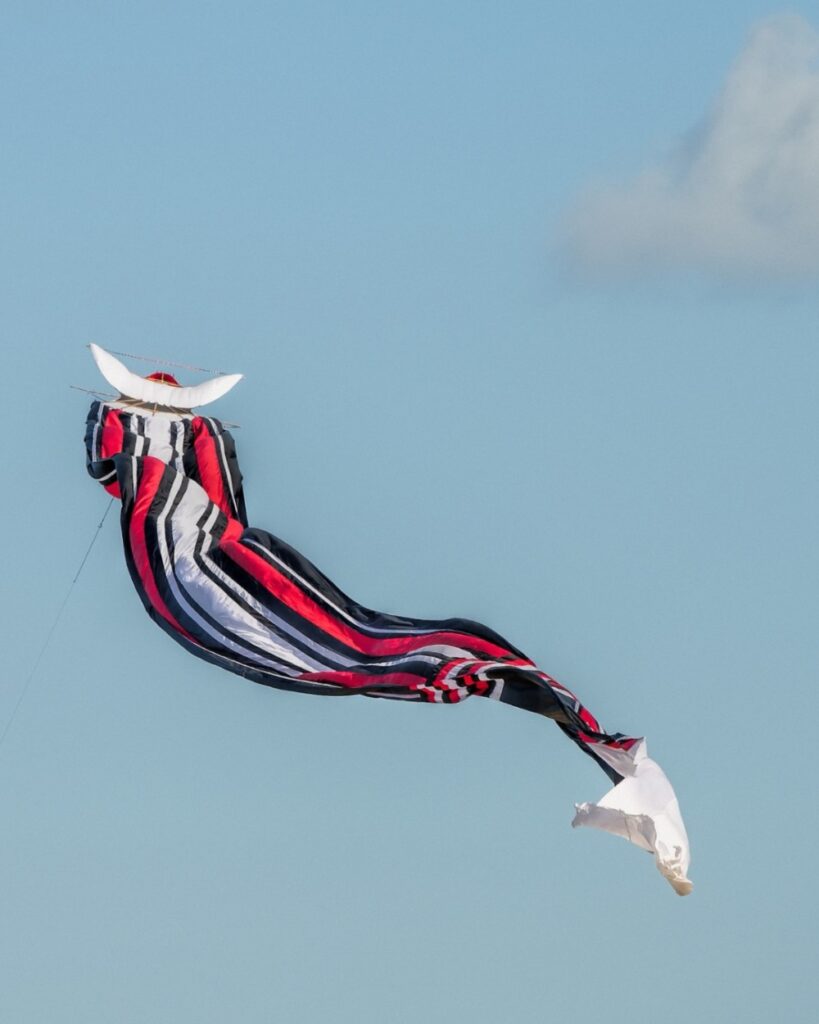
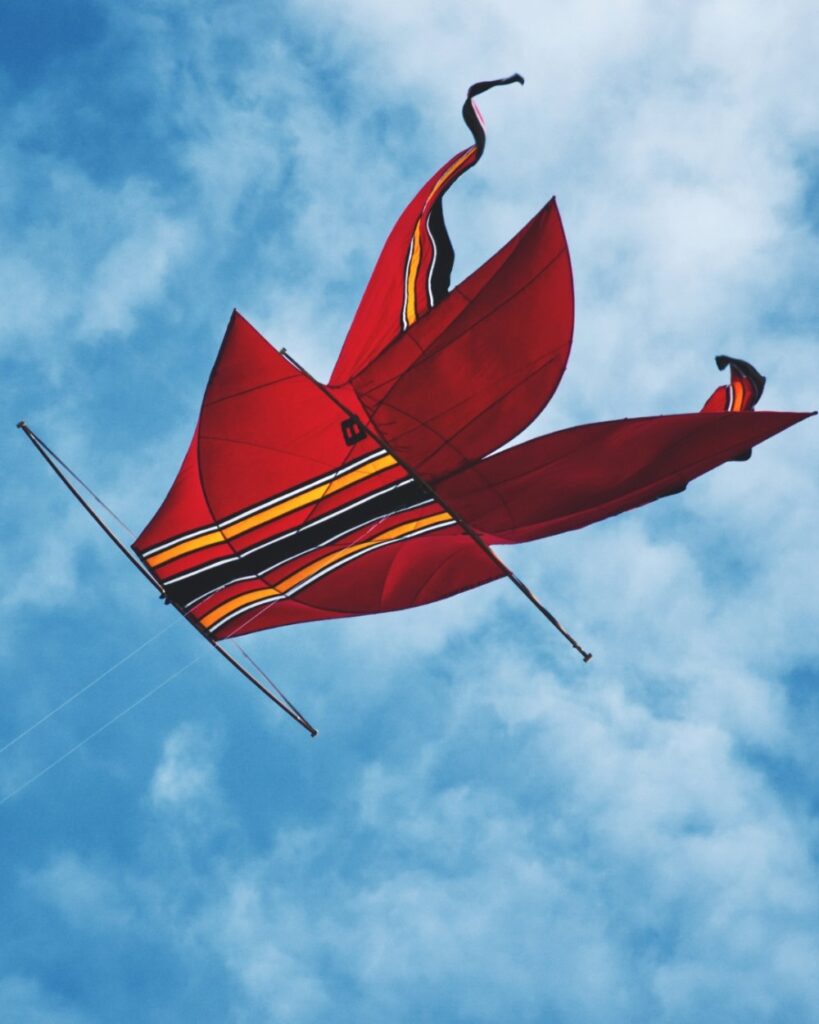
Kites are flown year-round in Bali but during this season is when the skies are crowded, even congested, with all manner of kites, in different shapes and sizes.
The three traditional types of kites are: the ‘bebean’, which is shaped like a fish; ‘pecukan’, an oblong-shaped kite; and the the most impressive are the ‘janggan’ kites, symbolic of the cosmic dragon Basuki and fashioned with an impressive carving of the legendary serpent.
More impressive are the janggan’s tails, which blanket the sky with over a hundred metres of black, red and white material which soars ever so elegantly from the back of the kite. Janggan kites are considered sacred, and thus many are given a ceremony before being flown for the first time.
The Bali Kite Festival
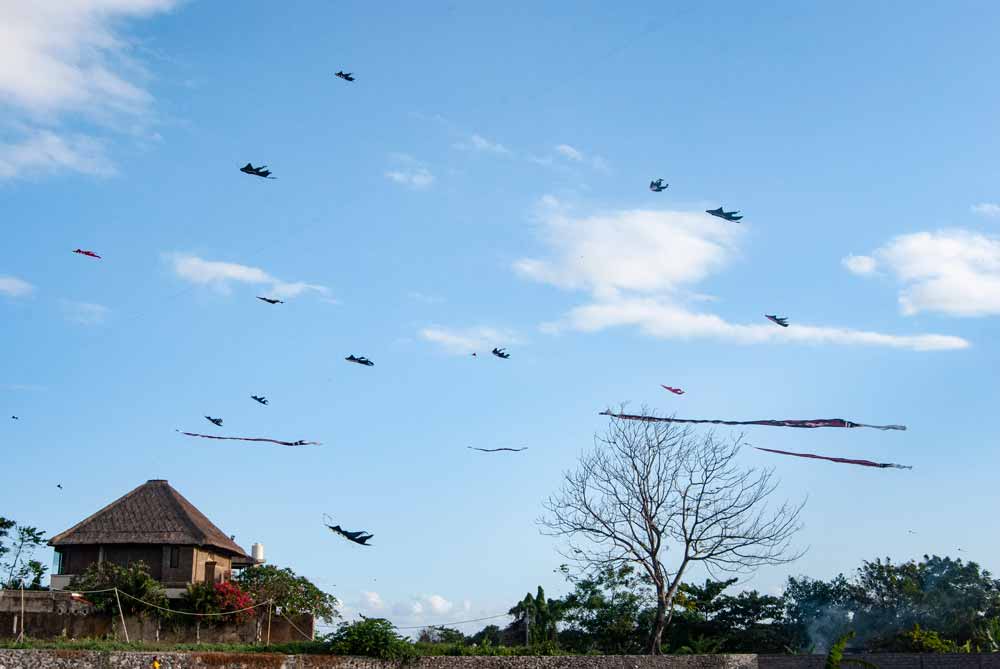
What was once a simple pastime for children out in the farms and fields has grown to become one of Bali’s most anticipated events. The Bali Kite Festival, founded back in 1979, now sees thousands of kites taking flight simultaneously. Preparing for such competitions is a highlight for banjars (village communities) around the island, who design, make and fly the kite together. It’s an important communal activity which epitomises Bali’s community-based culture, alongside the creation of the ogoh-ogoh effigies.
The festival takes place in July and is quite thereal spectacle as each team comes with their own flags, music, support groups and the venue is filled with food, drinks, live commentary and there is a real sense of fair and carnival. Padang Galak Beach, neighbouring Sanur, is a hotspot to witness kite flying.
Competition or not, Bali’s skies will be filled with kites through this windy season. Accompanying this visual feast, you’ll notice, is the distinct ‘guangan’ sound that reverberates through the air, a hum produced by a string or ribbon stretched across two splints — a veritable sign that kite season is here!









